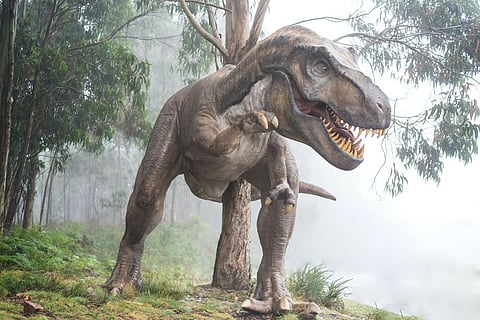
- Home
- न्यूजग्राम
- NewsGram USA
- India
- World
- Politics
- Entertainment
- Culture
- Lifestyle
- Economy
- Sports
- Sp. Coverage
- Misc.
- NewsGram Exclusive
- Jobs / Internships

By Tharini Ilanchezhian
The scientists of Chinese Academy of Sciences have discovered the fossils of two enormous dinosaurs that lived about 120 to 130 million years back, during the cretaceous period.
The research that was published in the Journal 'Scientific Reports', which had summarized the analysis of the fossils of the early beings, which was collected from the North-West regions, of China, Xinjiang and Turpan-Hami Basin.
In the recent times, a number of species have been discovered from these regions. Flying pterosaurs, preserved eggs, fossils fragments of spinal vertebrates, rib cages and embryos.
The Sauropod dinosaur specimens have been named as Silutitan Sinesis, which means "Silk Road" in Mandarin and Hamititian Xinjiangensis named after the region it was discovered. Both the dinosaurs names contain the Greek word 'Titan', which translates to 'Giant' which refers to the enormous body structure of the two beings.
The dinosaurs are a huge sized species that lived on earth in the times immemorial. They belong to the Sauropod family and have been belied to be the largest known animals to have walked on earth. They were herbivores and had long necks and tails.
The researchers from the Chinese Academy of Sciences and The National Museum of Brazil have discovered that the two specimens belong to a previously unidentified species known as Silutitan. The two dinosaurs were tremendously huge in size, that it measures as same as the size of blue whales which is about 23-30 metres long.
The specimen 'Hamititian' was as long as 17 metres and has been named after the place it was discovered- Xinjiang. The scientists have an unanswered question, 'How did the dinosaurs from South America end up in China?' This query rises because Sauropod fossils with similar characteristics have been discovered in excavations of South America. The Silutitan species have been found to measure almost 20 metres long. With the dinosaur's neck bone, the researchers have arrived to a conclusion that it belonged to the family of Sauropod classified as Euhelopopidae that has appeared to live in East Asia.
Previously, in this year, the researchers have discovered a small winged creature with broad eyed and a grin, in the Hubei province of China. This unfamiliar species of pterosaurs dates back till 160 million years. Another discovery of the first ever dinosaur sitting the nest of eggs has uncovered in China. This bird-like beast seems to have roamed around earth 66 million long years ago.
